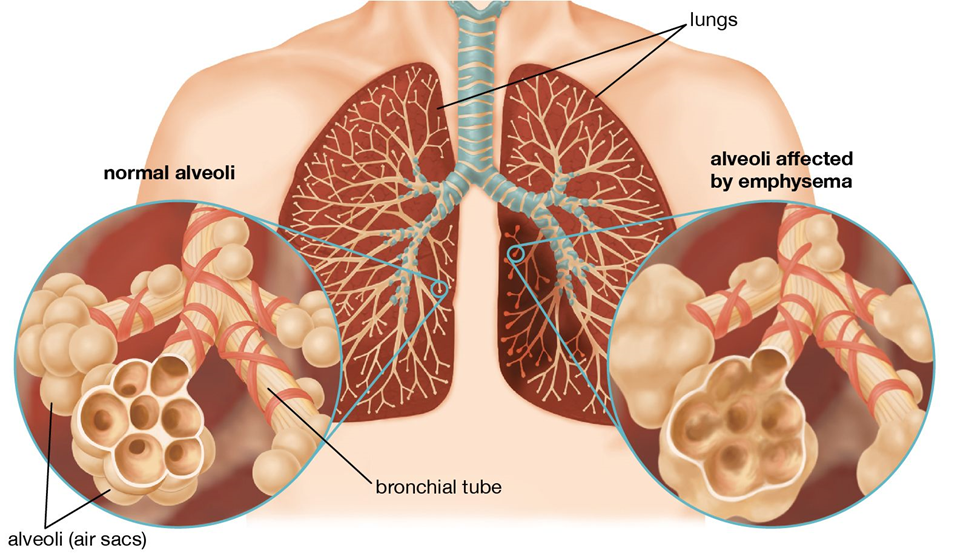A nurse is caring for a client with chronic obstructive pulmonary disease (COPD). The nurse positions the client in the orthopneic position. What is the primary reason for the use of this position for this client?
Prevents pressure ulcers.
Supports hip extension.
Facilitates breathing.
Promotes urinary elimination.
The Correct Answer is C
Choice A Reason:
“Prevents pressure ulcers” is incorrect. While positioning can help prevent pressure ulcers, the orthopneic position is specifically used to aid in breathing rather than to prevent pressure ulcers. Pressure ulcers are typically managed by regularly repositioning the client and using pressure-relieving devices.
Choice B Reason:
“Supports hip extension” is incorrect. The orthopneic position does not primarily support hip extension. This position involves sitting up and leaning forward, which does not significantly affect the hips.
Choice C Reason:
“Facilitates breathing” is correct. The orthopneic position, also known as the tripod position, helps to improve breathing in clients with COPD. By leaning forward and resting the arms on a table or knees, the diaphragm can move more freely, and accessory muscles of respiration are better utilized, reducing the work of breathing.

Choice D Reason:
“Promotes urinary elimination” is incorrect. The orthopneic position is not intended to promote urinary elimination. Urinary elimination is typically managed through other interventions such as ensuring adequate hydration and, if necessary, using a catheter.
Nursing Test Bank
Naxlex Comprehensive Predictor Exams
Related Questions
Correct Answer is A
Explanation
Choice A reason: Guided meditation and other nonpharmacological pain interventions can help reduce the perception of pain, which may allow for lower doses of pain management medications. This is beneficial as it can reduce the risk of side effects and dependency associated with higher doses of pain medications1. Studies have shown that integrating nonpharmacological methods like guided meditation can enhance overall pain management and improve the quality of life for patients2.
Choice B reason: Guided meditation is a complementary therapy and is not intended to replace pain medications entirely. While it can significantly aid in pain management, it is typically used alongside pharmacological treatments to provide a holistic approach to pain relief3. Relying solely on guided meditation without appropriate medical supervision and medication can lead to inadequate pain control.
Choice C reason: Guided meditation is not limited to hospital settings or licensed therapists. Many guided meditation resources are available online, through apps, or in community centers, making it accessible to a broader audience4. Patients can practice guided meditation at home, which provides flexibility and convenience in managing chronic pain.
Choice D reason: Pain medications are often prescribed on a regular schedule to maintain consistent pain control, especially in chronic pain conditions. While nonpharmacological interventions can reduce the need for frequent dosing, they do not eliminate the necessity for scheduled pain medications5. It is essential to follow a healthcare provider’s recommendations for medication administration to ensure effective pain management.
Correct Answer is A
Explanation
Choice A reason: Administering the medication within 90 minutes of the provider prescribing it aligns with the definition of a “NOW” order. A “NOW” order is intended to be given promptly but not as urgently as a STAT order, which requires immediate administration. This timeframe ensures that the medication is given in a timely manner to address the client’s needs without unnecessary delay.
Choice B reason: Administering the medication at specific times until directed by the provider is not appropriate for a “NOW” order. This approach is more suitable for routine or scheduled medications, where the timing is predetermined and consistent. A “NOW” order requires prompt action rather than adherence to a fixed schedule.
Choice C reason: Administering the medication at every 4-hour intervals is incorrect for a “NOW” order. This frequency is typical for PRN (as needed) medications or those requiring regular dosing intervals. A “NOW” order is a one-time directive that necessitates timely administration soon after the order is given.
Choice D reason: Administering the medication whenever the client reports specific manifestations, such as pain, is characteristic of PRN orders. PRN orders are given based on the client’s symptoms and needs at the time. A “NOW” order, however, is a one-time order that should be carried out promptly, regardless of the client’s immediate symptoms.
Whether you are a student looking to ace your exams or a practicing nurse seeking to enhance your expertise , our nursing education contents will empower you with the confidence and competence to make a difference in the lives of patients and become a respected leader in the healthcare field.
Visit Naxlex, invest in your future and unlock endless possibilities with our unparalleled nursing education contents today
Report Wrong Answer on the Current Question
Do you disagree with the answer? If yes, what is your expected answer? Explain.
Kindly be descriptive with the issue you are facing.
